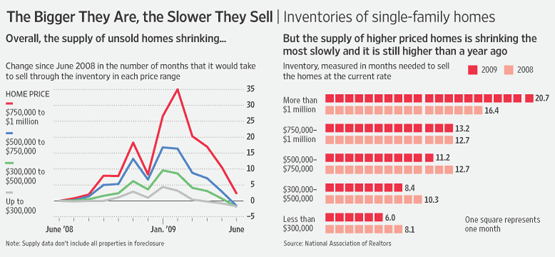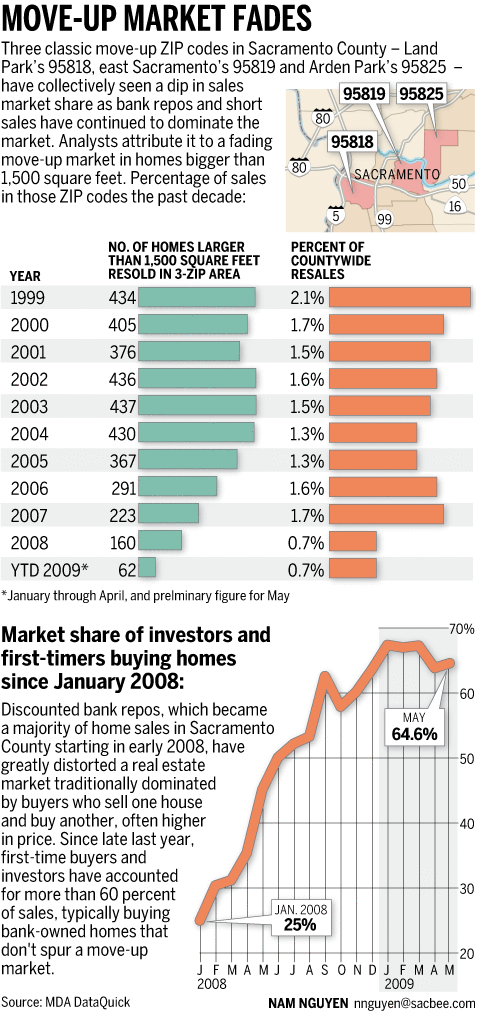Upper End Not Participating In Housing Bottom
Housing is fast dividing into two markets: Sales of low- and moderately priced homes are picking up and values have stopped falling in some parts of the nation. But on the upper end, sales remain mired in a deep slump and price declines are expected to accelerate.
– “High End Homes Frozen Out Of Budding Housing Rebound” (subscription required), The Wall Street Journal, August 3, A1
You put all that together, it leads me to believe that the next leg down on home prices is going to come from the top.
– Joshua Shapiro, Chief US Economist, MFR, quoted in the article
We’re in a ‘trade-down’ environment for the first time since the 1930s.
– Ken Rosen, Chairman, Fisher Center for Real Estate and Urban Economics, UC Berkeley, quoted in article
There’s was a lot of talk last week about a bottom in the housing market. I’ve been calling for a bottom since May (see “Signs Of A Bottom In Sacramento Area Housing Market”, Top Gun FP, May 5; “More Signs of a Bottom In Sacramento Home Market”, Top Gun FP, May 24).
But the upper end of the housing market appears to still be in free fall. This is masked in the median price statistics because high end homes make up only a very small percentage of total home sales. (Sales of existing homes over $750,000 accounted for only 2.3% of all sales in the first quarter of 2009). For example, while inventories relative to current sales trends are dropping for homes at the lower end, they are still increasing at the higher end.

This was first brought to my attention by my friend Eric Sprague (founder of the poker forum FlopTurnRiver) in early June and Jim Wasserman of the Sacramento Bee confirmed it with a fascinating piece from June 19: “Sacramento area misses move-up homebuyers – they’re staying put”, The Sacramento Bee, June 19, A1.

There are a number of reasons for this. For one, Fannie Mae and Freddie Mac will only buy loans under $417,000 from banks – $729,750 in certain markets such as parts of Hawaii, California, New York and Washington, DC. Mortgage rates on jumbo loans, loans higher than Fannie and Freddie’s limits, are higher. According to the WSJ article, the average rate last week on a 30 year mortgage below the limits was 5.42% compared to 6.33% for jumbos.
Another reason is the dumping of low priced foreclosures by banks onto the market, spurring bargain hunting at the lower end.
A third reason is the $8,000 federal first time home buyer tax credit. First time home buyers buy entry level, not high end, homes.
This also explains why homes in my Dad’s high end neighborhood on the border of Redwood City and Woodside CA continued to hold up after the lower end market collapsed, causing me to lose a $100 bet to him. The high end market held up longer, cracked later and is following in the path of the rest of the housing market with a bit of a lag.
